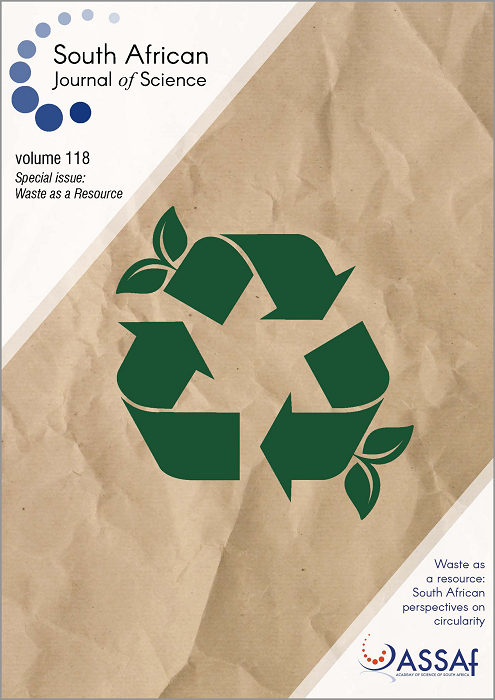An estimate of construction and demolition waste quantities and composition expected in South Africa
DOI:
https://doi.org/10.17159/sajs.2022/12485Keywords:
construction and demolition waste, built environment, waste management, South Africa, circular economyAbstract
Construction and demolition (C&D) waste is generated from the construction, renovation, repair and demolition of the built environment. It is one of the largest waste streams and is generally not well documented or understood. Various methods for estimating C&D waste are reviewed, and the development of two methods for estimating C&D waste quantities and composition generated in South Africa is discussed. The lifetime method is based on current production quantities of key construction materials and their typical stock life. This is contrasted with the scale-up of a pocket of reasonably good statistics for Cape Town’s C&D waste on a per-capita basis to determine totals for South Africa. The lifetime method yielded a result of 20.2 Mt of potential C&D waste generated in South Africa in 2017, while the per-capita method suggests that 10.8 Mt of C&D waste reached disposal sites. These quantities are much higher than the 4.48 Mt reported in official national statistics for 2017. It is important to understand and accurately quantify C&D waste in South Africa so that effective waste management can be implemented. Specifically, the reuse of C&D waste needs to be understood, as this takes precedence over recycling or downcycling according to circular economy principles. Overall, this research highlights that C&D waste quantities in South Africa appear to be considerably underreported, undermining attempts to introduce more sustainable waste management practices.
Significance:
- The results of both methods used in this study were significantly higher than reported in official South African statistics, indicating considerable underreporting in national databases as in most waste statistics worldwide.
- The informal sector is plausibly an intensive reuser of discarded building materials and demolition products from the formal sector. The omission of these informal waste management practices is a likely contributor to the difference between the official statistics and both estimates.
- It is important to accurately quantify this waste stream as this can contribute to increasing materials circularity in South Africa and lower environmental impact through the achievement of circular economy goals.
Published
Issue
Section
License

All articles are published under a Creative Commons Attribution 4.0 International Licence
Copyright is retained by the authors. Readers are welcome to reproduce, share and adapt the content without permission provided the source is attributed.
Disclaimer: The publisher and editors accept no responsibility for statements made by the authors
How to Cite
- Abstract 1540
- PDF 1834
- EPUB 313
- XML 352












.png)